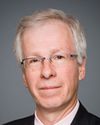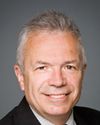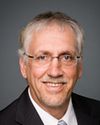Good morning, ladies and gentlemen.
I am delighted to have the opportunity to speak to you today. I wish to thank this important committee for inviting me to speak to you about the 150th anniversary of our great country.
As a living memorial to the Fathers of Confederation located in the birthplace of our great nation, Confederation Centre of the Arts pays a lively tribute to Canada's founding and ongoing development as a nation. Our centre reflects the achievements that began with the historic Charlottetown conference in 1864 and that encompass the evolution of every Canadian province and territory. The dream of an architecturally stunning building, a national memorial arts centre located in Canada's birthplace, was realized in 1964.
Located in Prince Edward Island, Confederation Centre is a multi-functional professional arts facility. Recognized internationally for its contributions to Canada's performing arts, the centre offers four theatres, with a seating capacity of 2,500. It is home to a national art gallery with a permanent collection of more than 16,000 works of art. It offers a full range of bilingual arts education programs for hundreds of youth and includes a new accredited school for the performing arts in cooperation with P.E.I.'s Holland College. Volunteers, local members, and corporate sponsors generously support the operation. Each year 250,000 people participate in our programming.
As everyone knows, the centre is home to the Charlottetown Festival and Canada's longest-running musical, Anne of Green Gables—The Musical, which has drawn millions of visitors to P.E.I. over the last 48 years. Equally important, though, we have produced over 70 original theatre productions employing hundreds of actors, dancers, musicians, and artistic creators from across the country.
Today the centre is committed to engage and empower the imagination of our youth and their unique ability to learn, to strengthen our national identity, and to increase the cultural and economic wealth of all Canadians.
We are committed to recognizing Canada's linguistic duality through programming and services. Most of our services to the public are bilingual, including our website, front-line box office and telephone services, art gallery materials and publications, and the Confederation Players, who interpret the history of Confederation via vignettes and guided tours in both official languages. Our arts discovery days program is offered in both languages. These services are a priority as our institution has a national mandate. The continued expansion of our bilingual services will be a priority for the centre as we prepare for the 2017 anniversary.
For our 2013 season, we are currently looking into staging a new, original Canadian musical. We are thinking about staging the musicalEvangeline, written by Ted Dykstra, the creator of 2 Pianos, 4 Hands. This great love story, based on the poem by Longfellow, tells the story of the famous Evangeline, who became separated from her beloved, Gabriel.
This musical honours the survival of French people and their culture, the indomitable human spirit, and the love between two people, all framed by the energizing music and dance of the Acadian, Maritime, and Cajun people. The musical will be presented mainly in English but will include French songs to ensure that we capture the beauty of the French language. We anticipate a cross-Canada tour, culminating in a return to Charlottetown in 2017.
If we are able to raise the extra funds, $500,000, required for this important project by our due date of Friday of this week, the exciting creation of Evangeline: the Musical will begin immediately.
The centre has been a leader in numerous cultural celebrations that have taken place over the last 48 years. The first, of course, was the opening of the centre itself, on October 4, 1964, by Her Royal Majesty Queen Elizabeth II. With the financial support of all provinces and the federal government, the centre opened under the auspices of Prime Minister Diefenbaker with the premiers of all provinces present. At the time, Prime Minister Pearson stated eloquently, "[The Fathers of Confederation Memorial Building] is a tribute to those famous men who founded our Confederation. But it is also dedicated to the fostering of those things that enrich the mind and delight the heart, those intangible but precious things that give meaning to a society and help create from it a civilization and a culture."
In 2004 we initiated an exciting new heritage program, the Symons medal and lecture, which features prominent Canadians who focus on national issues such as politics, development, arts and culture, and heritage. This annual lecture is always offered with simultaneous translation services.
In 2007 our Confederation Centre Youth Chorus performed for thousands of war veterans, dignitaries, and international media at the dedication of the restored Canada National Vimy Memorial in France. The chorus hopes to participate in the 100th anniversary of the Battle of Vimy Ridge in 2017.
In 2010 the Vancouver Olympic Winter Games proudly showcased Canadian achievements, and the centre was the proud secretariat for the Atlantic pavilion site, or what the media coined the “gold medal cultural pavilion”.
As part of the Cultural Capitals of Canada partnership with Canadian Heritage, the Confederation Centre's Young Company was thrilled to present The Talking Stick, a production starring the first-ever entirely first nations cast. We want to repeat this in 2017.
Our vision for 2017 is the proud cultural movement that inspires all Canadians by honouring our past, celebrating the present, and planning a bold future for Canada's artistic and cultural society. Most importantly, we are developing many ways to ensure that Canadians understand this incredible asset we have in our country, linguistic duality.
In 2014 the centre will be celebrating its own 50th anniversary and the 150th anniversary of the Charlottetown conference. In cooperation with PEI 2014, plans are under way to mark these momentous occasions and to reach all Canadians. Such plans are precursors to Canada's 150th birthday in 2017, and they will include the creation, production, and tour of the next great Canadian musical, Rivir; a national commemorative sculpture erected on the centre's plaza; an enhanced presentation of Canada Rocks! The Hits Musical Revue; a modernized presentation of the bilingual Young Company production Les Feux Follets, representing Canada's multiculturalism; the continued staging of Evangeline: The Musical; an expansion of the national Symons medal and lecture series; a bilingual commemorative book highlighting the centre's outstanding activities over 50 years; and bilingual vignettes, tours, and performances by the Confederation Players, who interpret the events that led to the conception of Canada at the Charlottetown conference.
At Confederation Centre we express ourselves through the visual and performing arts. We are considering a number of theatre projects for 2014 and 2017 that will appeal to both Canadians and visitors to Canada. Among the projects is 1864: The Musical, an inventive take on the founding of Canada, populated by characters such as Sir John A. Macdonald and Sir George-Étienne Cartier.
The centre has undertaken a legacy project that will not only celebrate the 150th anniversary of Canada but will also distinguish Canada as a world leader in art, music, and technology. For now called The Next Great Canadian Musical, Rivir, this new show will be a breathtaking, gravity-defying spectacle that will acknowledge Canada's rich heritage and great prospects. We seek to create an original theatrical experience that will rival musical classics such as The Lion King and Cats. This new musical will tour Canada and return to Charlottetown for the 2017 celebrations.
We are also in the early stages of developing a major bilingual visual arts exhibition concerning architectural projects that were part of Canada's centennial celebrations during the 1960s. They constitute an important record of the national identity, values, and aspirations of the day. We see the potential for a major travelling exhibition. Since the centre was the first centennial project to be completed, it would help celebrate the centre's 50th anniversary in 2014, tour nationally between 2014-2017, and culminate in an exhibition at the National Arts Centre in Ottawa, which was the final federal centennial project, completed in 1969.
The Confederation Centre is a national historic site ideally suited to plan and host activities for the 150th anniversary. Situated within historic Charlottetown, the official birthplace of Confederation, the centre is not only Canada's national memorial to the Fathers of Confederation and the founding of this great nation; it is also a well-oiled machine teeming with bilingual talent and ability. We are ready to be a major contributor to 2017's celebration.
As host to millions of visitors over our 48-year history, we know how to celebrate, whether it be in P.E.I. or anywhere else in Canada.
I wish to sincerely thank you for giving me the opportunity to join you for this dialogue on how we can together celebrate Canada's 150th anniversary.
All Canadians, from coast to coast, will have the chance to come together to commemorate our important role on the world stage and our unique heritage. We are proud to be able to begin our next 150 years with the possibility of building a future that is innovative, transformative and, most of all, Canadian, in a country with two official languages.
Thank you very much.








